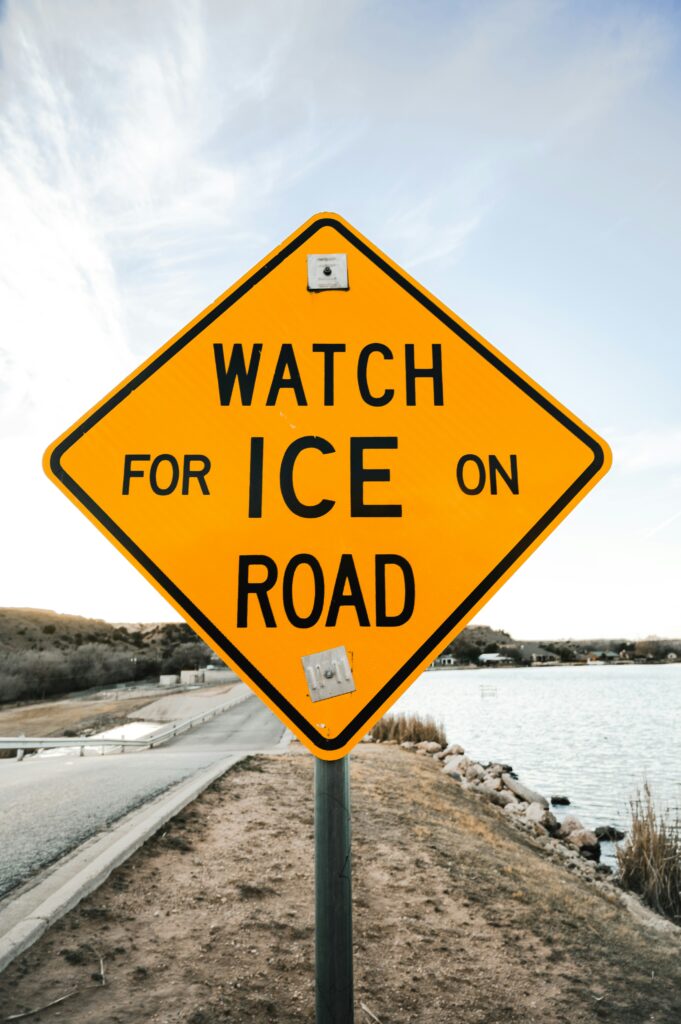Why Winter Driving Poses Serious Risks and How to Stay Safe
Winter driving presents unique challenges that every driver must be aware of. Snow, ice, and reduced visibility significantly impact road safety. As temperatures drop, even the simplest commute can become hazardous. In this article, we’ll explore the risks of winter driving and provide key tips to stay safe during the colder months.
The Risks of Winter Driving
1. Slippery and Icy Roads
One of the most dangerous aspects of winter driving is the formation of ice. When temperatures hover around freezing, roads can become coated with invisible black ice. This ice is particularly hazardous because it’s hard to spot. It can cause drivers to lose control unexpectedly. Black ice often forms on bridges, overpasses, and shaded areas, making these spots more dangerous.
2. Reduced Visibility
Snow, sleet, and fog can drastically reduce visibility. When snow or ice build up on your windshield, it obstructs your view. This makes it harder to see pedestrians, other vehicles, or hazards. Additionally, winter brings shorter daylight hours. This leaves drivers navigating in dimmer or low-light conditions. Combined with weather-related obstacles, reduced visibility makes winter driving even more perilous.
3. Longer Stopping Distances
Cold weather can affect your car’s braking ability. Snow or ice on the roads increases the distance needed to stop your vehicle. Even with winter tires, stopping distances are longer in these conditions. Sudden braking on slippery roads can lead to skidding. For this reason, it’s crucial to leave more space between your vehicle and others on the road.
4. Vehicle Malfunctions
Winter temperatures can cause issues with your car. Cold weather strains your battery, and other components, like tires and wipers, wear out faster. Mechanical problems are more likely during winter. These malfunctions can leave you stranded or put you at greater risk of an accident.
5. Increased Risk of Collisions
Winter roads make it easier to lose control of your vehicle. Even experienced drivers are at risk due to slick conditions. Many drivers are not used to handling winter weather, which increases the chances of accidents. Rear-end crashes, spinouts, and sliding into another lane are common in winter. The combination of ice and driver inexperience increases the likelihood of collisions.
How to Stay Safe While Driving in Winter
While winter driving is risky, there are steps you can take to protect yourself. By preparing your vehicle and adjusting your driving habits, you can reduce the dangers.
1. Prepare Your Vehicle for Winter
Before hitting the road, ensure your car is winter-ready. Check the battery, tires, and wiper blades. Winter tires provide better traction in snow and ice. Also, keep your gas tank at least half full. This helps prevent running out of gas if you get stuck in an emergency situation.
2. Drive Slow and Steady
When driving in winter, always reduce your speed. Snow and ice reduce traction, making it harder to stop quickly. Slower speeds give you more time to react to potential hazards. Avoid making sudden moves like sharp turns or hard stops, as these can cause skidding. It’s best to gently accelerate and decelerate in winter conditions.
3. Increase Your Following Distance
In winter, leave extra space between your vehicle and the one in front of you. Snow and ice increase the stopping distance needed. By maintaining several car lengths between you and others, you give yourself time to react if they stop abruptly. A good rule of thumb is to increase your following distance by 3 to 4 seconds in winter.
4. Use Your Headlights Wisely
Always use your headlights during winter driving, even during the day. This makes your vehicle more visible to others. In foggy or snowy conditions, avoid high beams. High beams can reflect off particles in the air and reduce your visibility. Instead, use your low beams to improve your view of the road.
5. Be Aware of Changing Road Conditions
Winter weather can change rapidly. One moment, roads may be clear, and the next, they could be icy or snow-covered. Stay alert for signs of slippery conditions, such as wet spots or frost. Be prepared to adjust your speed and driving techniques based on changing conditions. By staying aware of the road, you can react faster and drive more safely.
Keep an Emergency Kit in Your Vehicle
It’s always best to be prepared for the worst. Keep an emergency kit in your car, including essentials like a blanket, flashlight, non-perishable snacks, and water. A first-aid kit can also come in handy. If your car breaks down or you get into an accident, these items can be lifesavers. Don’t forget to keep a small shovel, sand, or cat litter in your vehicle for traction if you get stuck in the snow.
Avoid Distracted Driving
Distracted driving is dangerous in any season, but it’s especially risky in winter. Snow, ice, and poor visibility demand your full attention. Avoid texting, using your phone, or adjusting the radio while driving. Keep both hands on the wheel, and focus on the road ahead.
Conclusion
Winter driving can be risky, but following safety tips can help you stay safe. Always prepare your vehicle for the challenges of winter, and drive carefully to avoid accidents. Remember that speed, following distance, and staying alert are essential in icy and snowy conditions. With proper precautions, you can minimize the risks and enjoy a safe winter driving experience. Stay prepared, stay focused, and stay safe on the road this winter.

